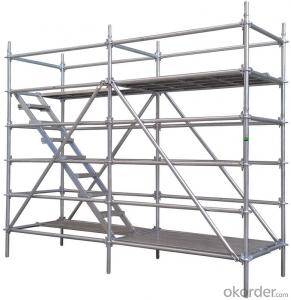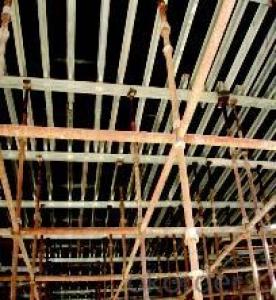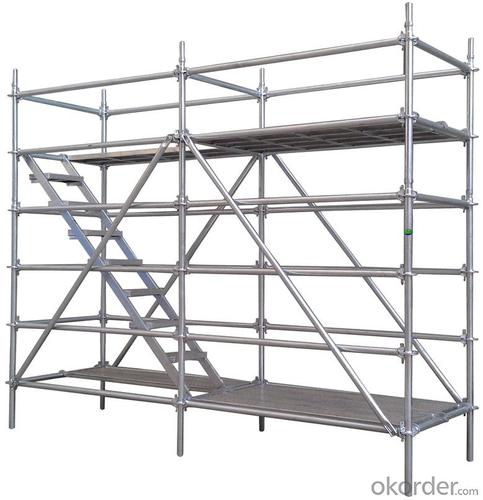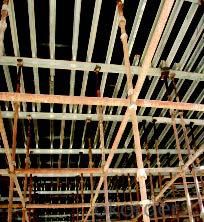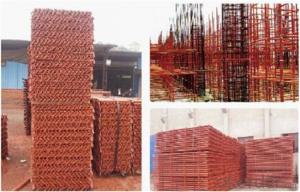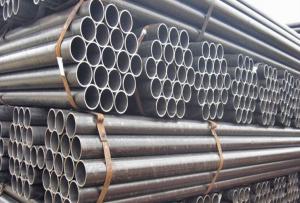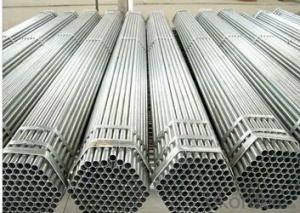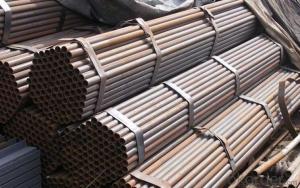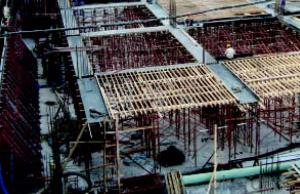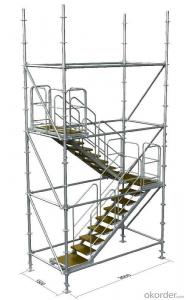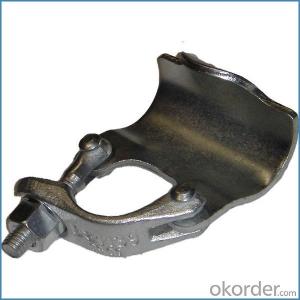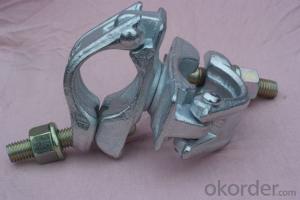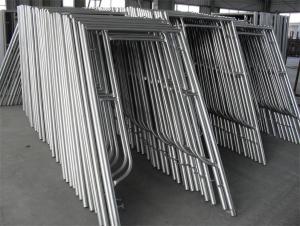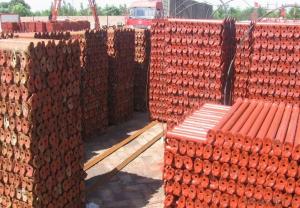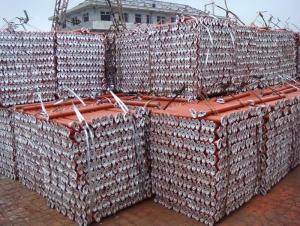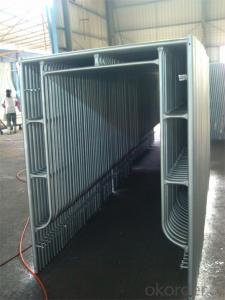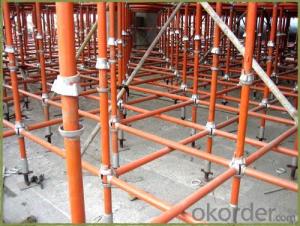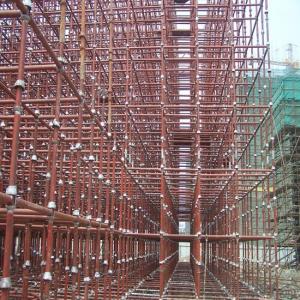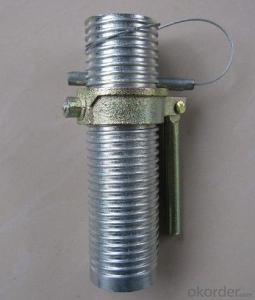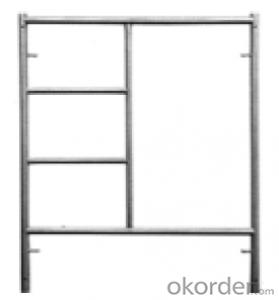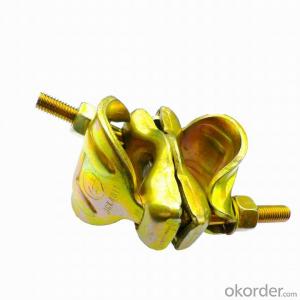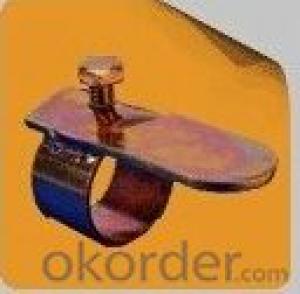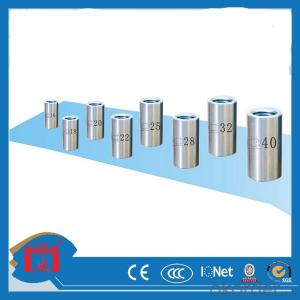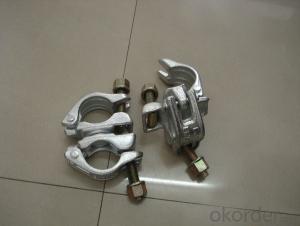China Supplier Props Scaffolding for Construction Projects
- Loading Port:
- Qingdao
- Payment Terms:
- TT OR LC
- Min Order Qty:
- 100 pc
- Supply Capability:
- 30000 pc/month
OKorder Service Pledge
OKorder Financial Service
You Might Also Like
Model NO.:WM-SCAFFOLD
Type: Fixed
Material: Metal
Construction Properties: Installation Scaffold
Lapping Form: Single Row Scaffolding
Framework: Combined Scaffolding
Supporting Mode: Floor Type Scaffolding
Erection Position: External Scaffolding
Scaffolding Part Type: Scaffolding Props
Move Method: Attached Lifting Scaffolding
Structural Style:Multi-Pole Scaffolding
Size:122mm
Export Markets:Global
T6061 Form Work Aluminium Beam for Table Formwork(Tableform),Slab Formwork, Wall Formwork, Column Formwork in Concrete Formwork System Made By Excrustion Aluminium Profile in Size of 122mm, 165mm, 185mm etc to meet clients and project requirement in different countries.
CNBM is a leading scaffolding, Steel Pipe, Formwork Product manufacturer and Exporter with 50, 000m2 advance AUTO production lines by ISO9001 management system, specialize in producing high quality steel Scaffolding System, Scaffolding Accessories, Formwork Panels and Formwork Accessories , Scaffold Tubes and GI Pipes.
With decades years Manufacturing and Exporting,CNBM, supplies and worked for clients from 49 Countries in satisfied safety quality and competitive price and service. .
Safety is Life of Scaffolding Manufacturer, Wellmade Scaffold Controls Scaffolding Quality By Strict Management System and Own Independent Testing Throughout Full Production Processes On
1) Raw Materials Steel Testing
2) Welding Line Testing
3) Loading Capacity Testing
4) Scaffold Elements Assembly Inspection
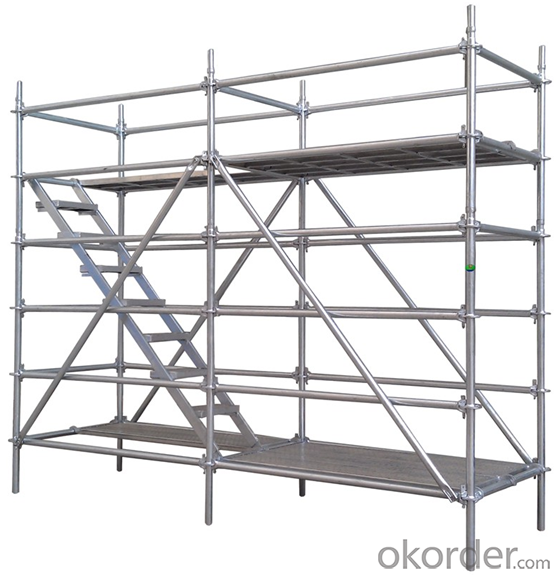
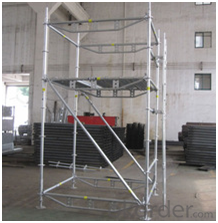
- Q: Are steel tube couplers compatible with different types of scaffolding stairs or access systems?
- Yes, steel tube couplers are compatible with different types of scaffolding stairs or access systems. These couplers are designed to securely connect and join steel tubes, allowing for versatile and flexible configurations in scaffolding structures. They can be used with various types of stairs or access systems, ensuring compatibility and stability in different scaffolding applications.
- Q: How is a steel tube coupler used in scaffolding?
- A steel tube coupler is used in scaffolding to connect two steel tubes together securely, providing stability and strength to the structure. It acts as a fastening device, allowing scaffolding components to be joined at various angles and configurations, ensuring a safe and sturdy platform for workers to access elevated areas.
- Q: Are there any specific safety training requirements for handling and using steel tube couplers in scaffolding?
- Safety training requirements for handling and using steel tube couplers in scaffolding exist in various countries, including the United States and the United Kingdom. Regulations and standards outline the necessary safety training for individuals working with these couplers. A key requirement is that individuals must receive proper training and be competent in the safe assembly and dismantling of scaffolding using steel tube couplers. This training covers understanding different coupler types, proper usage, and correct connection and securing methods to ensure stability and structural integrity. Furthermore, individuals should be trained on the safe handling and storage of steel tube couplers to prevent injuries or accidents. This includes learning proper lifting techniques, using appropriate personal protective equipment (PPE), and keeping couplers in good condition without any damage or defects. Moreover, safety training should address the identification and mitigation of potential hazards associated with working with steel tube couplers, such as falls, collapsing scaffolding, or falling objects. Emphasis should be placed on regular inspections and maintenance of scaffolding structures to identify any issues with couplers or overall stability. Ultimately, it is crucial for individuals working with steel tube couplers in scaffolding to receive proper safety training to ensure their own safety and that of others on the construction site. Qualified trainers or organizations should provide this training, which should be regularly updated to incorporate new regulations and industry best practices.
- Q: Can steel tube couplers be used with scaffolding systems that require cantilevered platforms?
- Yes, steel tube couplers can be used with scaffolding systems that require cantilevered platforms. Steel tube couplers are commonly used in scaffolding systems to join scaffolding tubes together, providing a secure and stable structure. When scaffolding systems require cantilevered platforms, which are platforms that extend beyond the support structure, steel tube couplers can be utilized to connect the necessary tubes and create the required cantilever. However, it is essential to ensure that the scaffolding system is designed and constructed according to industry standards and regulations to guarantee the safety and stability of the cantilevered platform.
- Q: How should steel tube couplers be inspected and maintained?
- To ensure optimal performance and extend the lifespan of steel tube couplers, it is essential to regularly inspect and maintain them. The following guidelines outline the steps for inspecting and maintaining steel tube couplers: 1. Visual Assessment: Begin by visually examining the couplers for any indications of damage, corrosion, or wear. Check for cracks, deformations, or loose connections. This initial examination provides an overall understanding of the couplers' condition. 2. Lubrication: Regularly apply an appropriate lubricant compatible with the coupler material to reduce friction and prevent the accumulation of dirt and debris. This promotes smooth operation. 3. Cleanliness: Keep the couplers clean by removing dirt, rust, or other contaminants. Use a brush or cloth to cleanse the coupler surface. Avoid abrasive materials or harsh chemicals that could harm the couplers. 4. Tightening: Inspect and tighten the bolts or screws that secure the couplers according to the manufacturer's recommended torque. Loose connections can lead to misalignment and reduced efficiency. 5. Corrosion Prevention: Safeguard the couplers from rust and corrosion by applying an anti-corrosion coating or paint. This is particularly crucial if the couplers are exposed to harsh environmental conditions or moisture. 6. Periodic Inspection: Conduct regular inspections to identify any signs of wear or damage in the couplers. Depending on usage and environmental conditions, this can be done monthly or quarterly. Be attentive to changes in performance or appearance. 7. Replacement: Immediately replace severely damaged, cracked, or worn out couplers. Continuing to use faulty couplers can pose significant safety risks and compromise the structural integrity of the system. 8. Professional Inspection: In addition to regular inspections, it is advisable to periodically engage a certified engineer for a comprehensive assessment of the couplers' condition. They can provide maintenance recommendations or suggest replacements, if necessary. By adhering to these steps, steel tube couplers can be effectively inspected and maintained, ensuring their reliability and prolonged lifespan. Regular maintenance prevents costly repairs, enhances safety, and optimizes coupler performance.
- Q: Are steel tube couplers compatible with scaffolding edge protection systems?
- Yes, steel tube couplers are compatible with scaffolding edge protection systems. Steel tube couplers are commonly used in scaffolding to connect scaffold tubes together, providing stability and strength to the scaffolding structure. These couplers are designed to securely fasten the tubes, ensuring the safety of the scaffold and the workers on it. When it comes to edge protection systems, steel tube couplers can be used to attach various components of the system, such as guardrails, toe boards, and mesh panels, to the scaffold. The couplers allow for easy installation and adjustment of the edge protection system, ensuring that it is securely attached to the scaffold and providing adequate protection to workers from falling off the edges. It is important to note that the compatibility of steel tube couplers with scaffolding edge protection systems may vary depending on the specific design and requirements of the system. Therefore, it is recommended to consult with a qualified scaffolding engineer or supplier to ensure that the steel tube couplers being used are compatible with the specific edge protection system being installed.
- Q: How do steel tube couplers affect the overall noise level of a scaffolding structure during use?
- Steel tube couplers do not have a direct impact on the noise level of a scaffolding structure during use. The noise level is primarily influenced by the activities taking place on the scaffolding, such as workers' movements, equipment usage, and the materials being handled.
- Q: Can steel tube couplers be used with different types of scaffolding systems, such as ringlock or cuplock?
- Yes, steel tube couplers can be used with different types of scaffolding systems, including ringlock and cuplock. Steel tube couplers are versatile and can be used to connect steel tubes of various diameters and thicknesses. They provide a secure and reliable connection between the tubes, ensuring the stability and strength of the scaffolding structure. Whether it is a ringlock or cuplock system, steel tube couplers can be easily integrated and used to join the tubes together, allowing for the construction of stable and flexible scaffolding systems.
- Q: im getting one in a few days ad want ti know if it will be painfull.
- Its not too bad, putting in your CBR is more painful, and sleeping isnt very fun. But its my absolute favourite piercing
- Q: What are the different types of steel tube couplers?
- Various industries and applications commonly employ several types of steel tube couplers. Some of the most frequently seen types are as follows: 1. Sleeve couplers: These simple couplers are used to connect two steel tubes in a straight line. Typically, they consist of a cylindrical sleeve with internal threads on both ends, which can be tightened to secure the tubes in place. 2. Swivel couplers: Designed to allow angular movement between connected steel tubes, these couplers often incorporate a swivel joint that enables rotation. They are ideal for applications requiring flexibility, such as scaffolding systems. 3. Flange couplers: Utilized to connect steel tubes with flanged ends, flange couplers consist of two flanges, one on each tube, which are bolted together to create a secure connection. They are commonly employed in piping systems and structural applications. 4. Compression couplers: These couplers join steel tubes by compressing them together. Typically, they consist of two parts – a compression ring and a compression nut. The compression ring is placed over the tube ends, and the nut is tightened to compress the ring and establish a tight seal. 5. Welded couplers: Employed for permanently joining steel tubes through welding, these couplers are frequently used in applications where a strong and durable connection is required, particularly in structural contexts. 6. Clamp couplers: Designed to offer a rapid and straightforward means of connecting steel tubes, clamp couplers usually feature a clamp mechanism that can be tightened around the tubes to hold them in place. They are commonly used in temporary structures like exhibition stands or stage constructions. These examples represent only a fraction of the available steel tube coupler types. The selection of a coupler depends on factors such as the specific application, the type of steel tube used, and the desired strength and flexibility of the connection.
Send your message to us
China Supplier Props Scaffolding for Construction Projects
- Loading Port:
- Qingdao
- Payment Terms:
- TT OR LC
- Min Order Qty:
- 100 pc
- Supply Capability:
- 30000 pc/month
OKorder Service Pledge
OKorder Financial Service
Similar products
Hot products
Hot Searches
Related keywords
